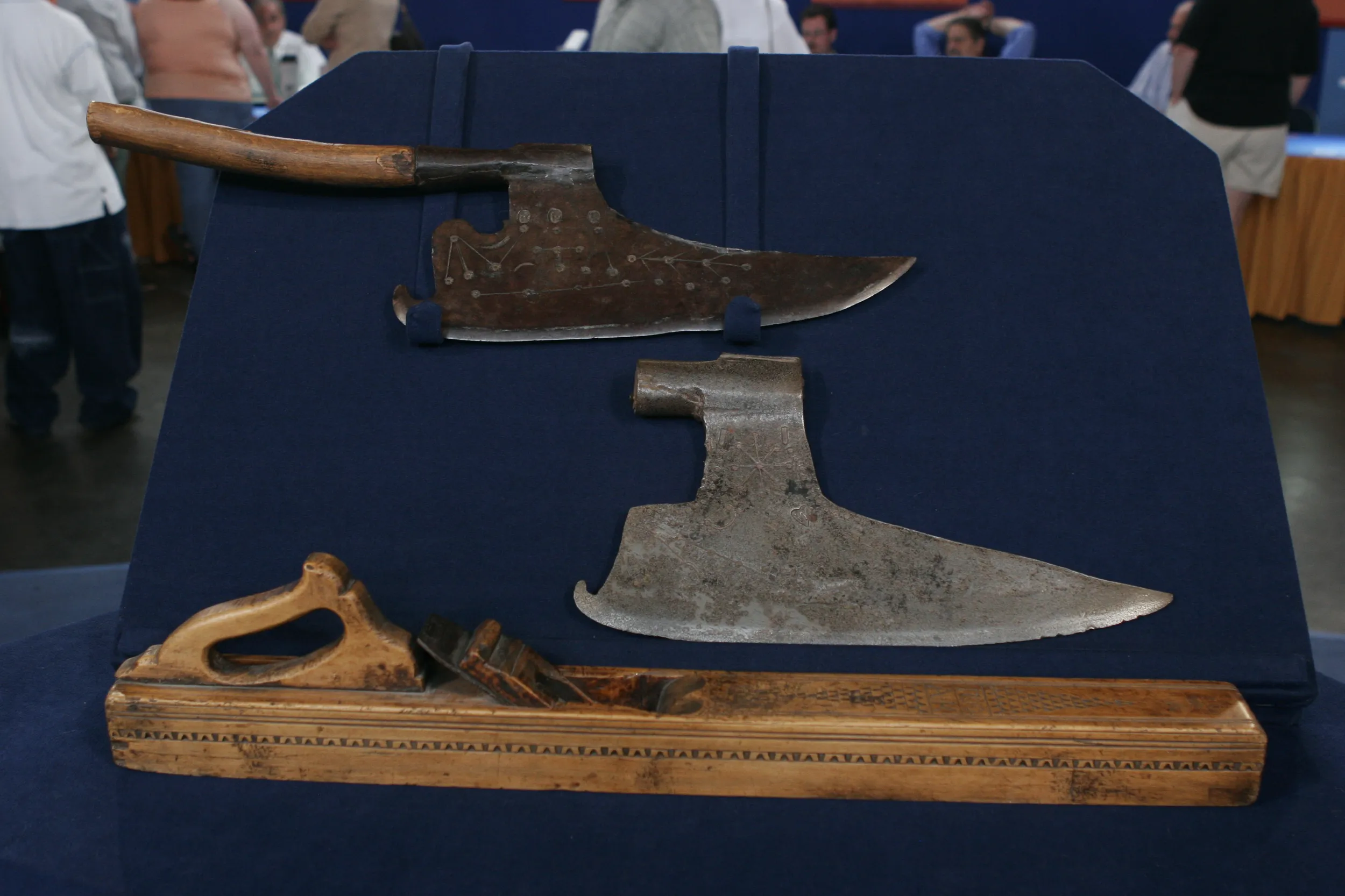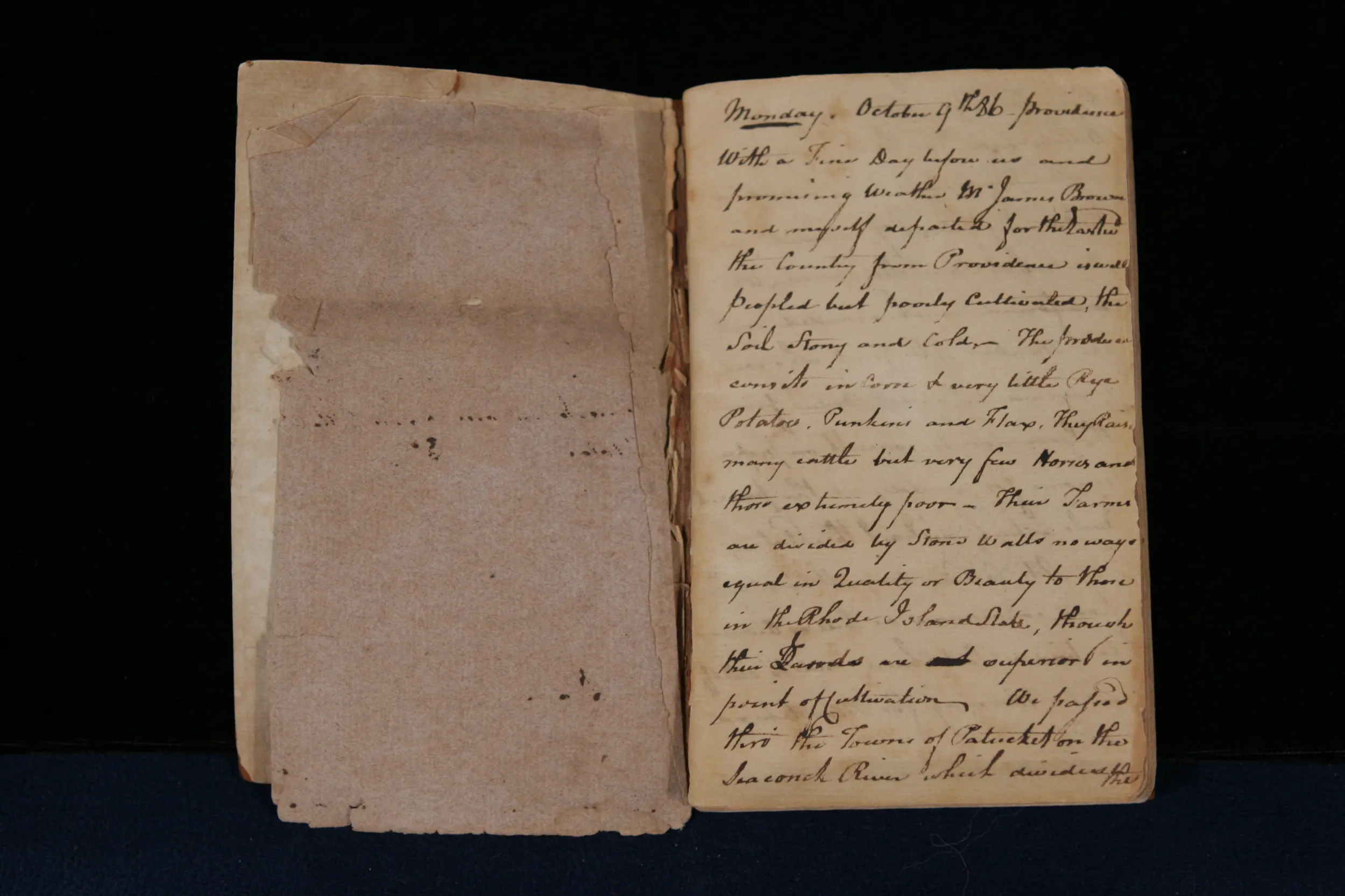GUEST: I know only a little bit about it. Um, I believe it to be colonial, made late 1700s, maybe early 1800s, somewhere on the East Coast, but that's almost the extent of my knowledge.
APPRAISER: Okay. One of the things that's interesting is that it's definitely a New England desk. And we know that because it's maple, it has bracket feet, which are typical of New England, with this distinctive little cutout. The interior is a New England interior. These small drawers, these moldings, stepped interior-- typical of New England, as are these hinges. As far as narrowing it down, if we pull out this drawer, we can see that this is chestnut. It's a distinctive porous grain with these striations, and that's a tree that was primarily growing in Rhode Island. So we can actually narrow this down to being made in Rhode Island, and it's probably about, right about, um... 17... right around 1760, maybe '65. The big question I know that you had I think, was about whether or not this was made for a child.
GUEST: Yes, I've been told that it's possibly a child's desk or possibly a salesman's sample, and that's an unresolved question.
APPRAISER: Okay. It's a good question to ask, because they did have salesman's samples in the 18th century, but they were usually smaller...
GUEST: Okay.
APPRAISER: …and more transportable. This was made for a child, possibly made by a cabinetmaker as a token of love for his daughter or son to use. And actually, the desk is in great condition, but when I first looked at it, I have to tell you, I looked at this backboard and saw that it was white pine with these modern nails, and I sort of said, "Uh-oh," you know, "What's wrong?" because inside, when you look, this is actually... deep inside, the backboard is chestnut, which you see...
GUEST: In the drawers.
APPRAISER: …in the drawers. And if we turn it upside down, in fact, we see evidence that sort of vindicates the piece, because there's actually a layer here, like a sandwich. You see that? So the original chestnut board is here, and someone laid on a pine board. So you could actually take that off, and you'd have the original backboard on the piece. So it's got the orig-- so that's very refreshing because it really changes the value quite a bit. This does not have its original brasses, but you can see the outline of the brasses here. They were a little bit larger, so it would have looked a little better. We saw holes before, coming through the drawer, so we know it's about the third set of brasses. So, it's a pretty rare desk. We see lots of adult-size desks, but very few little ones like this. And value-wise, did you ever have this appraised?
GUEST: I've never had an official appraisal. I've never had any real interest in selling it, but I am curious.
APPRAISER: Okay, well, it's probably worth in the range of $20,000 to about $25,000.
GUEST: Hmm, well, that is a bit higher than I would have guessed. I probably would have said something in the range of half of that.
APPRAISER: No, there's no question about it.









